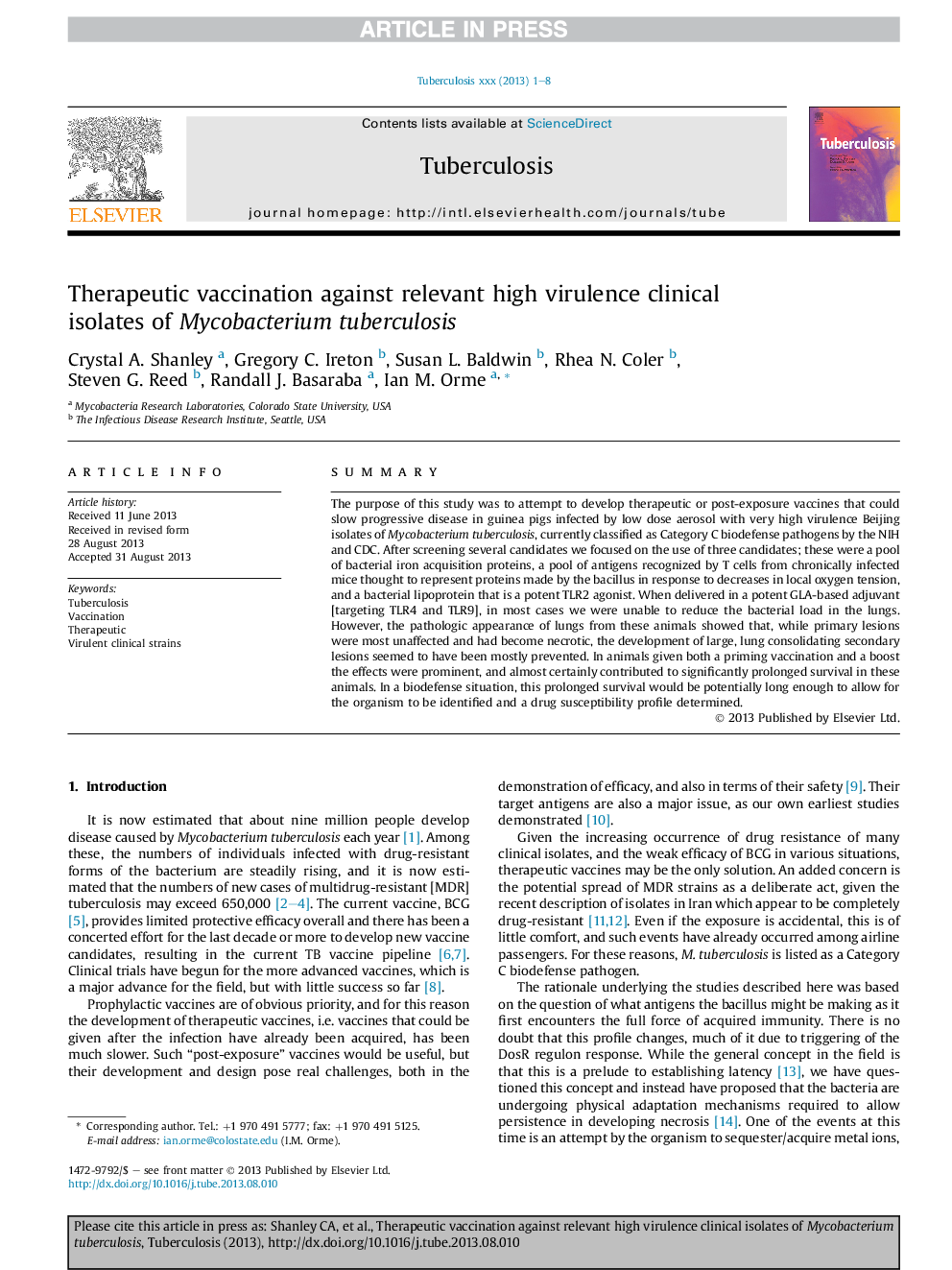| Article ID | Journal | Published Year | Pages | File Type |
|---|---|---|---|---|
| 10962004 | Tuberculosis | 2014 | 8 Pages |
Abstract
The purpose of this study was to attempt to develop therapeutic or post-exposure vaccines that could slow progressive disease in guinea pigs infected by low dose aerosol with very high virulence Beijing isolates of Mycobacterium tuberculosis, currently classified as Category C biodefense pathogens by the NIH and CDC. After screening several candidates we focused on the use of three candidates; these were a pool of bacterial iron acquisition proteins, a pool of antigens recognized by T cells from chronically infected mice thought to represent proteins made by the bacillus in response to decreases in local oxygen tension, and a bacterial lipoprotein that is a potent TLR2 agonist. When delivered in a potent GLA-based adjuvant [targeting TLR4 and TLR9], in most cases we were unable to reduce the bacterial load in the lungs. However, the pathologic appearance of lungs from these animals showed that, while primary lesions were most unaffected and had become necrotic, the development of large, lung consolidating secondary lesions seemed to have been mostly prevented. In animals given both a priming vaccination and a boost the effects were prominent, and almost certainly contributed to significantly prolonged survival in these animals. In a biodefense situation, this prolonged survival would be potentially long enough to allow for the organism to be identified and a drug susceptibility profile determined.
Keywords
Related Topics
Life Sciences
Immunology and Microbiology
Applied Microbiology and Biotechnology
Authors
Crystal A. Shanley, Gregory C. Ireton, Susan L. Baldwin, Rhea N. Coler, Steven G. Reed, Randall J. Basaraba, Ian M. Orme,
